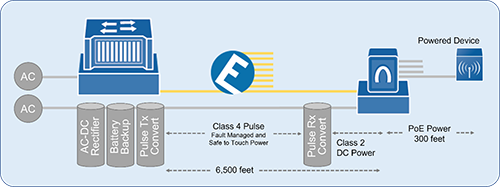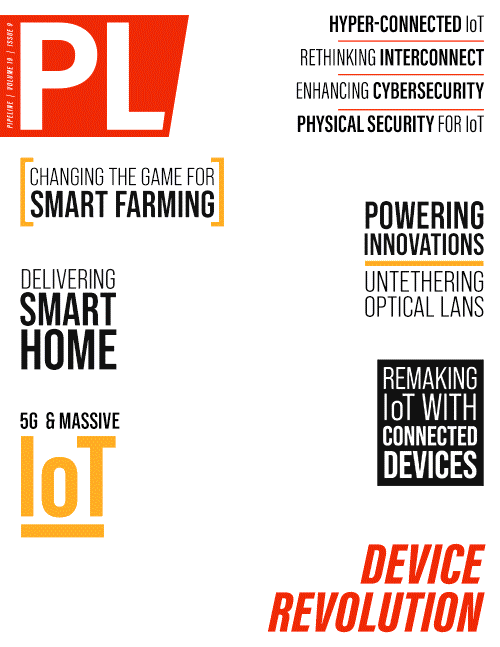Powering Innovations Untether Optical LANs
Optical LAN experiences greater network uptime. This is because Optical LAN utilizes passive optical splitters instead of active components, which reduces the risk of network downtime. Another advantage of Optical LAN is that it requires less human touch to operate. Since human error is the most common cause of network outages, Optical LAN provides a more reliable network with fewer IT and networking staff required.
The move toward fiber, and limitation of copper, is more environmentally friendly compared to legacy networks. Optical LAN requires fewer power-consuming components than traditional copper-based
networks, resulting in significantly lower energy consumption and a smaller carbon footprint. Moreover, fiber optic cables are more durable and have a longer lifespan than copper cables, which
reduces the need for replacement and results in less waste. All of this helps enterprises hit net-zero goals more readily.

Figure 4: An Optical LAN with Class 4 reaching 6,500 feet to energize an ONT
In summary, Optical LANs provide several advantages over traditional copper-based LANs for connecting Smart Buildings and IoT devices using fiber cabling. Optical LANs are more secure due to the inherent security features of fiber optic cables, and the use of passive components minimizes the risk of unauthorized access or network downtime. Optical LANs are scalable for connectivity density, bandwidth capacity, and extended distances. Finally, Optical LANs are more sustainable and environmentally friendly, requiring fewer power-consuming components and promoting efficient use of resources.
As the demand for energy-efficient and sustainable buildings continues to grow, PoE, Class 2 Power, Micro Grids, Class 4 power, and Passive Optical LANs are likely to become an increasingly important technology for modern connectivity. In fact, in-building and campus-wide networks that leverage these technologies together will gain the greatest advantages towards energy savings and sustainability contributions. The perfect alignment of these innovations in fiber cabling, Optical LANs, and powering systems will enable untethered future digital transformation, Smart Buildings, and IoT scalability.



















